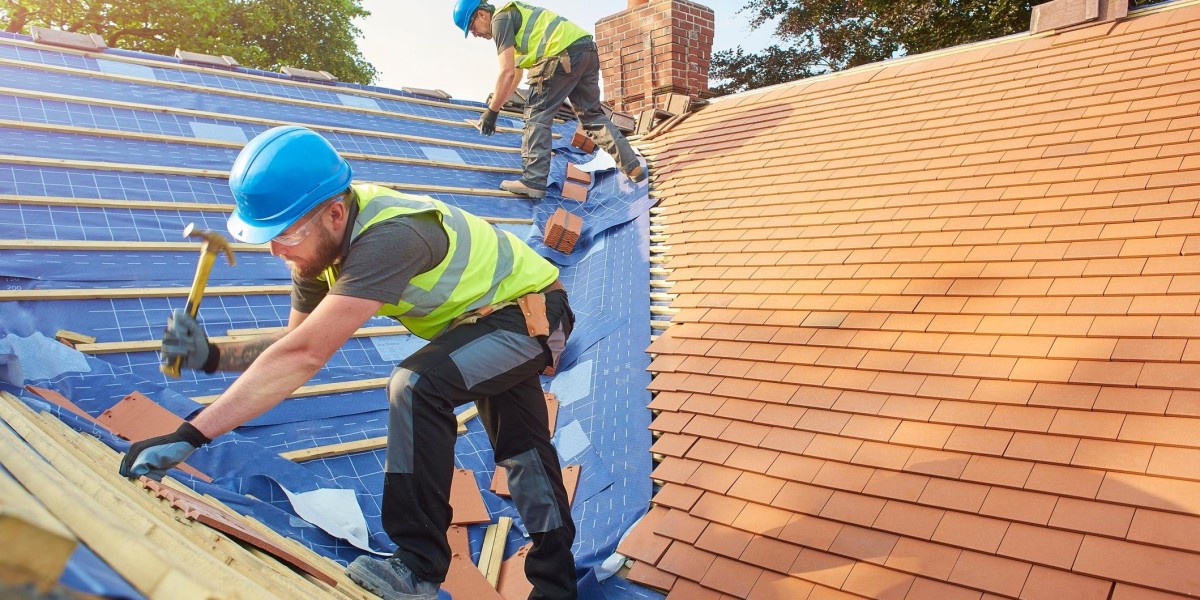That dreaded sound of water dripping into a bucket in the middle of the night is one no homeowner wants to hear. Or perhaps you've noticed your energy bills climbing inexplicably, or seen a neighbor's roof being replaced after the latest hailstorm and wondered about the state of your own. Your roof is your home's first line of defense against Colorado's unpredictable weather—from intense sun to heavy, wet snow and everything in between. When it fails, the consequences can be far-reaching, affecting your safety, your wallet, and your peace of mind.
For residents of Englewood, a new roof is more than just a maintenance task; it's a significant investment in the long-term health and value of your property. The process can seem daunting, filled with questions about cost, materials, and timing. This guide is designed to demystify the journey, providing a clear, practical overview of what to expect from a new roof installation Englewood project, helping you make an informed decision with confidence.
Recognizing the Signs: When It's Time for a Replacement
Knowing when to repair versus when to replace is the first critical step. While a few missing shingles can be fixed, there are clear indicators that a full replacement is the more prudent and cost-effective choice.
- Age of the Roof: Most asphalt shingle roofs, common in Englewood neighborhoods, have a lifespan of 20-25 years. If your roof is approaching or has exceeded this age, even if it looks okay from the ground, the underlying materials are likely deteriorating.
- Curling, Buckling, or Missing Shingles: These are visible signs of advanced wear. Curling shingles are vulnerable to wind uplift, and missing shingles leave the underlayment exposed to the elements.
- Granules in the Gutters: Asphalt shingles shed their protective granules as they age. Finding a significant amount of these sand-like granules in your gutters is a clear signal the shingles are nearing the end of their functional life.
- Daylight Through the Roof Boards: If you venture into your attic and see streaks of daylight peeking through the roof deck, it’s a definitive sign that your roof’s integrity is compromised.
- Persistent Leaks or Water Stains: A leak that keeps reappearing in different spots, or widespread water staining on your ceilings or attic rafters, indicates a systemic failure, not an isolated issue.
Navigating the Investment: Understanding Roofing Costs
The cost of a new roof is not a single number; it's a variable influenced by several key factors. Understanding these will help you interpret estimates accurately and budget effectively.
Key Factors Influencing the Price:
- Roof Size and Pitch: The total square footage is the primary driver. Steeper roofs are more labor-intensive and require more safety equipment, which increases the cost.
- Material Selection: This is where you have the most choice. The range from standard 3-tab asphalt shingles to premium materials like metal or slate is vast and has a major impact on the final price.
- Scope of Work: A full tear-off (removing all old layers down to the deck) is the gold standard and is more expensive than an overlay (installing new shingles over old ones). A tear-off allows for a thorough inspection of the deck and replacement of rotten wood.
- Complexity of the Roof: The number of valleys, dormers, chimneys, and skylights your roof has significantly increases labor time and material waste, as precise cutting and custom flashing are required.
- Underlayment and Ventilation: The quality of the synthetic underlayment and the type of ventilation system (ridge vents, soffit vents) are critical for long-term performance. Upgrading these components adds to the cost but is a wise investment.
A General Cost Range for Englewood:
For a standard tear-off and replacement of an asphalt shingle roof on an average-sized home (2,000-2,500 sq. ft.), you can expect a general range of $10,000 to $25,000. Higher-end materials like architectural shingles, metal, or tile can push the price to $30,000 or more. It's crucial to get multiple detailed, written estimates from reputable local contractors.
Choosing Your Roofing Material: Options for Colorado Climates
The material you choose will define your roof's appearance, lifespan, and performance. Here are the most common options for Englewood homes:
1. Architectural Asphalt Shingles
This is the most popular choice for a reason.
- What they are: A heavier, higher-quality version of the standard 3-tab shingle, with a dimensional, layered look that mimics wood or slate.
- Benefits: They offer an excellent balance of affordability, durability (often rated for 30+ years), and aesthetic appeal. Many are available in impact-resistant varieties, which are ideal for hail-prone areas and can even qualify you for an insurance discount.
- Considerations: They have a shorter lifespan than premium materials but represent the best value for most homeowners.
2. Metal Roofing
Metal is gaining rapid popularity for its durability and efficiency.
- What it is: Panels or shingles made from steel, aluminum, or copper.
- Benefits: Extremely long lifespan (40-70 years), highly resistant to fire, wind, and hail. Its reflective surface can significantly reduce cooling costs during hot Colorado summers. It also sheds snow efficiently.
- Considerations: Higher upfront cost than asphalt. The installation requires a high level of expertise to prevent issues.
3. Synthetic Slate or Shake
For those who want a premium look without the weight or cost of natural materials.
- What it is: Composite tiles made from recycled plastics and rubber that convincingly mimic the look of natural slate or cedar shake.
- Benefits: Lightweight, durable, impact-resistant, and often backed by long warranties (50 years is common). They won't rot, curl, or suffer from insect damage.
- Considerations: More expensive than architectural shingles, but typically less than genuine slate or a high-end metal system.
The Multifaceted Benefits of a New Roof Installation
A new roof is a significant undertaking, but the returns on this investment are substantial and multifaceted.
- Unmatched Protection and Peace of Mind: This is the primary benefit. A new roof with modern materials and proper installation creates a watertight, wind-resistant seal over your home. You can sleep soundly through a rainstorm or high winds, knowing your family and belongings are safe.
- Enhanced Energy Efficiency: A new roof system isn't just the shingles. It includes high-tech synthetic underlayment and proper attic ventilation. This combination works to regulate your attic's temperature, reducing the strain on your HVAC system and lowering your monthly energy bills.
- Increased Property Value and Curb Appeal: A new roof is one of the best returns on investment for home improvement. It dramatically improves your home's appearance and is a major selling point, often recouping a significant percentage of the cost at resale.
- Safety and Structural Integrity: A failing roof can lead to rotten decking and structural framing, which is far more expensive to repair than the roof itself. A timely replacement protects the entire structure of your home.
- A Valid Warranty: New roofs come with strong manufacturer warranties on the materials and a workmanship warranty from the installer. This provides long-term protection and predictability, something an old, worn-out roof simply cannot offer.
The Professional Installation Process: What to Expect
A professional roof replacement is a structured, efficient process designed to minimize disruption and ensure quality.
- Initial Consultation and Estimate: A reputable contractor will inspect your roof, discuss your options, and provide a detailed, written estimate.
- Preparation: The crew will protect your property with tarps and set up a dump trailer for the old roofing materials.
- Tear-Off: The old shingles and underlayment are removed, exposing the roof deck.
- Inspection and Repair: The deck is thoroughly inspected. Any rotten or damaged wood is replaced.
- Underlayment and Flashing: A new synthetic underlayment is rolled out, and new metal flashing is installed around all penetrations (vents, chimneys) and in valleys.
- Shingle Installation: The new shingles are installed from the bottom up, with careful attention to alignment and fastening.
- Clean-Up and Final Inspection: The site is meticulously cleaned using magnetic tools to pick up nails, and a final walk-through is conducted with the homeowner.
Investing in a new roof installation Englewood CO is one of the most important decisions you will make as a homeowner. It’s a project that safeguards your sanctuary, enhances your comfort, and strengthens your financial investment. By understanding the costs, choosing the right materials for your needs and budget, and partnering with a qualified, local contractor, you can transform a necessary upgrade into a source of long-term pride and security for your home.



